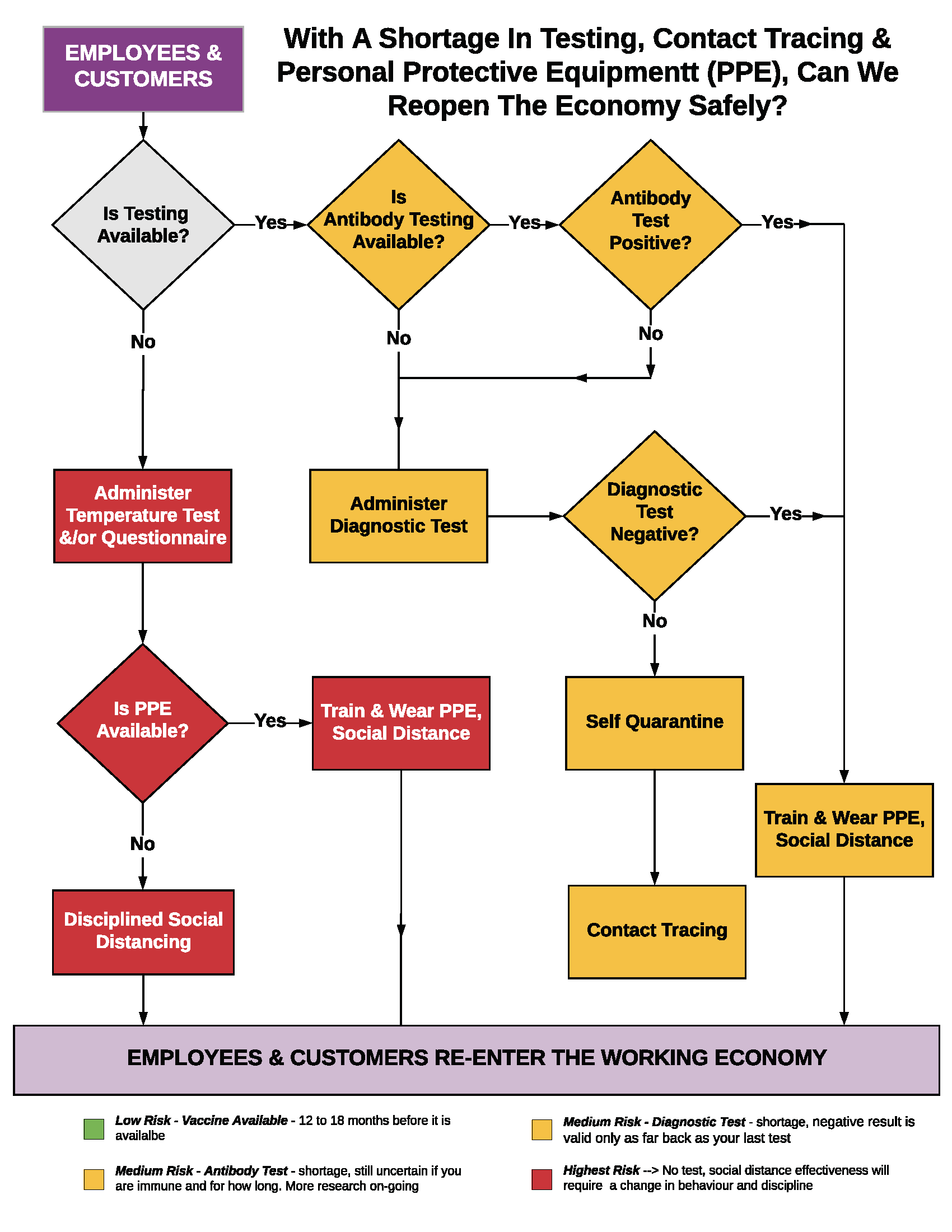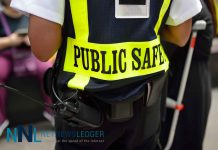As the world begins the important conversation of reopening their respective economies, there are many challenges that will need to be addressed in order to do so. Without adequate capacity in testing, contact tracing, and personal protection equipment (PPE), we must ask ourselves if we are really able to reopen the economy safely?
Studies show that asymptomatic people can also spread the virus in the community. How are we to ensure that we can do the necessary test, trace and treat to control the spread when we begin this process., It will be important that this factor is seriously addressed in order to get back to work. Otherwise, we may be allowing COVID-19 carriers to re-enter the workplace. This will put employees, customers, and business owners at risk for contracting the virus, and in turn, putting those living with them at risk.
We are making great sacrifices today to our financial obligations, mental well-being and social networking. To enter back into an economy that has not addressed this issue with a solid plan of action, would have life-threatening consequences not only for the workforce but for our loved ones that we are protecting today. One way may be to act as if we all have the virus, and with this scenario in mind, take the proper measures in safely reopening the economy.
Ultimately, it will be important to include representation of workers, customers, students, parents, and any stakeholder in shaping the safest path forward for reopening the economy. It is their lives that are at risk, and it is their decisions that will affect the health and well-being of themselves and their fellow citizens.
While all stakeholders in this battle against COVID-19 build a cohesive plan of action, the government will need to continue to financially support everyone through this unprecedented economic hardship. Social support systems are also important to continue to safeguard the vulnerable in our society and solid communication of funding mechanisms for all sectors must continue to flow into the community so everyone knows where they can get the help they need.
So, let’s get started.

This flowchart outlines a variety of scenarios and their associated risks in order to help stimulate a conversation and raise awareness regarding the challenges we face. It basically boils down to four scenarios:
- Low Risk – Vaccine – 12 to 18 months before it may be available
- Medium Risk – Antibody Test – Still uncertain if you are immune and for how long. More research on-going. Antibody test capacity issues. Testing results in reliability issues.
- Medium Risk – Diagnostic Test – Negative result is only as good as the last time you were tested. Diagnostic test and contact tracing capacity issues. Test results in reliability issues.
- Highest Risk – No Testing, PPE shortages
In subsequent commentaries, the various scenarios and their associated risks will be discussed further.
You and any stakeholders can help build a dynamic plan of action that can be implemented within the workplace to continue to save lives. You can comment by going to the Facebook post of this commentary found on NetNewsLedger’s Facebook page.
In the meantime, stay home; wash your hands often, social distance and wear a mask if you need to travel in the community. We can stop the spread of COVID -19 in our city and region and move forward to share a healthy and productive future together.








